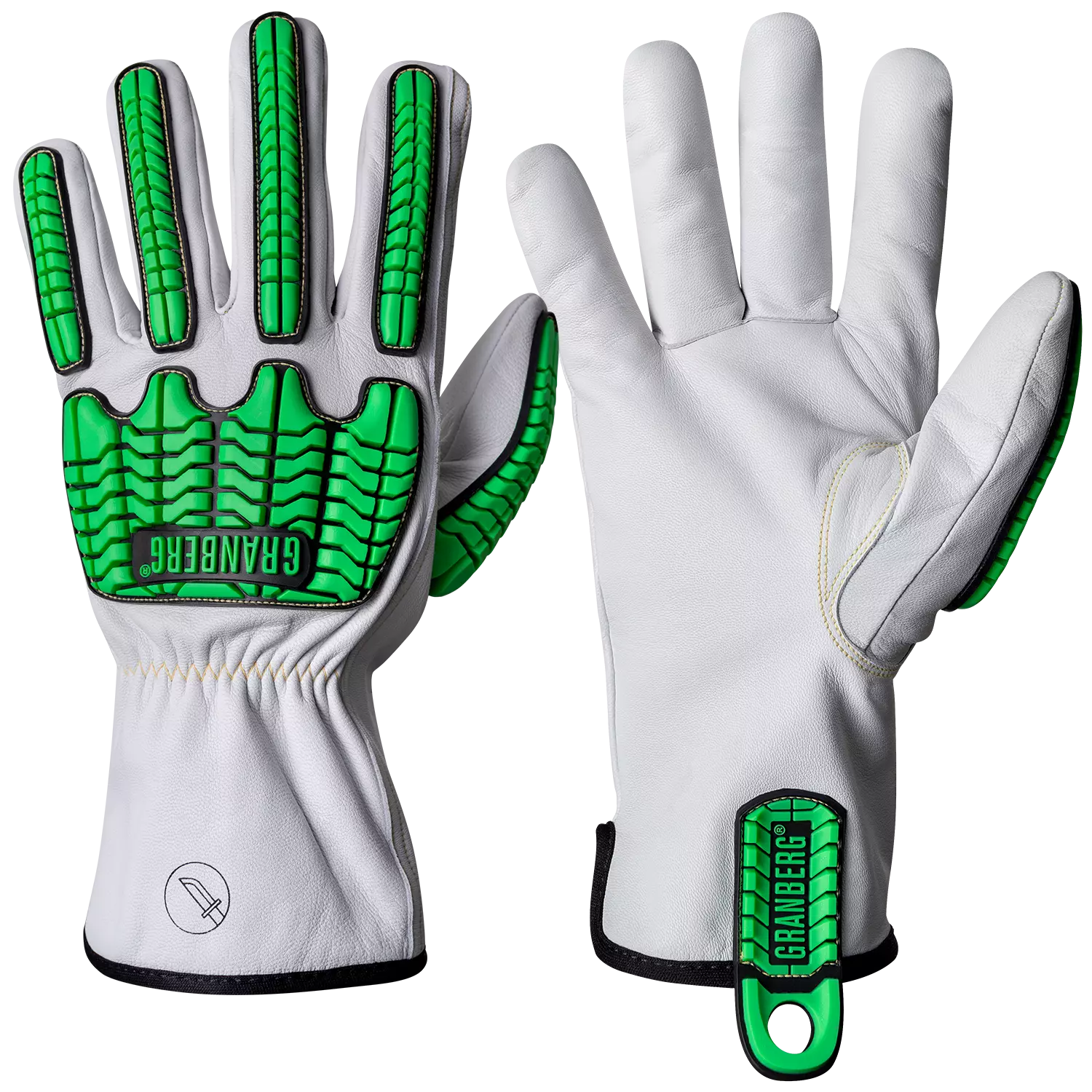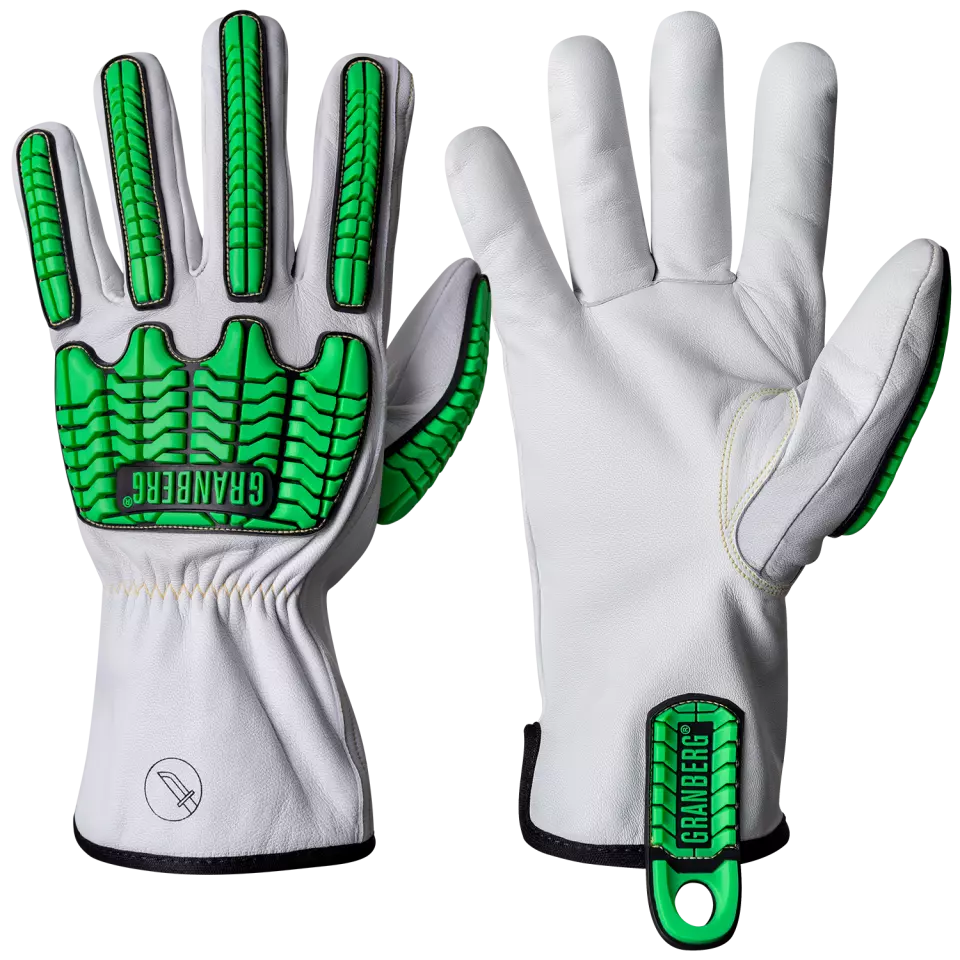These premium protective gloves combine goatskin leather construction with full Kevlar® lining to deliver exceptional cut resistance and durability. The ergonomic design ensures superior dexterity and touch sensitivity while providing comprehensive protection against multiple workplace hazards. Enhanced with impact protection and an extended cuff design, these gloves offer professional-grade safety for demanding industrial applications.
Product Features:
- Soft yet durable goatskin leather construction
- Full Kevlar® lining with Level D cut protection
- Extended cuff design protecting pulse area
- Reinforced with Kevlar® stitching
- Ergonomic design with robust pull tab
Technical Details:
- Length: 27-30 cm
- Normal fit design
- Fully lined with Polyglass and Kevlar®
- CE Category II certified
- Contact heat resistance: Level 1
Protection Ratings:
- Abrasion resistance: Level 3
- Tear resistance: Level 3
- Puncture resistance: Level 3
- Cut resistance: Level D
- ANSI Cut: A5
- ANSI Impact: Level 2
Recommended Applications:
- Oil and Gas Industry
- Mining and Quarrying
- Metalworking and Fabrication
- Construction Work
- Heavy Equipment Operation
Standards:
- EN ISO 21420:2020
- CE Category II certified
These premium protective gloves combine goatskin leather construction with full Kevlar® lining to deliver exceptional cut resistance and durability. The ergonomic design ensures superior dexterity and touch sensitivity while providing comprehensive protection against multiple workplace hazards. Enhanced with impact protection and an extended cuff design, these gloves offer professional-grade safety for demanding industrial applications.
Product Features:
- Soft yet durable goatskin leather construction
- Full Kevlar® lining with Level D cut protection
- Extended cuff design protecting pulse area
- Reinforced with Kevlar® stitching
- Ergonomic design with robust pull tab
Technical Details:
- Length: 27-30 cm
- Normal fit design
- Fully lined with Polyglass and Kevlar®
- CE Category II certified
- Contact heat resistance: Level 1
Protection Ratings:
- Abrasion resistance: Level 3
- Tear resistance: Level 3
- Puncture resistance: Level 3
- Cut resistance: Level D
- ANSI Cut: A5
- ANSI Impact: Level 2
Recommended Applications:
- Oil and Gas Industry
- Mining and Quarrying
- Metalworking and Fabrication
- Construction Work
- Heavy Equipment Operation
Standards:
- EN ISO 21420:2020
- CE Category II certified
These premium protective gloves combine goatskin leather construction with full Kevlar® lining to deliver exceptional cut resistance and durability. The ergonomic design ensures superior dexterity and touch sensitivity while providing comprehensive protection against multiple workplace hazards. Enhanced with impact protection and an extended cuff design, these gloves offer professional-grade safety for demanding industrial applications.
Product Features:
- Soft yet durable goatskin leather construction
- Full Kevlar® lining with Level D cut protection
- Extended cuff design protecting pulse area
- Reinforced with Kevlar® stitching
- Ergonomic design with robust pull tab
Technical Details:
- Length: 27-30 cm
- Normal fit design
- Fully lined with Polyglass and Kevlar®
- CE Category II certified
- Contact heat resistance: Level 1
Protection Ratings:
- Abrasion resistance: Level 3
- Tear resistance: Level 3
- Puncture resistance: Level 3
- Cut resistance: Level D
- ANSI Cut: A5
- ANSI Impact: Level 2
Recommended Applications:
- Oil and Gas Industry
- Mining and Quarrying
- Metalworking and Fabrication
- Construction Work
- Heavy Equipment Operation
Standards:
- EN ISO 21420:2020
- CE Category II certified


